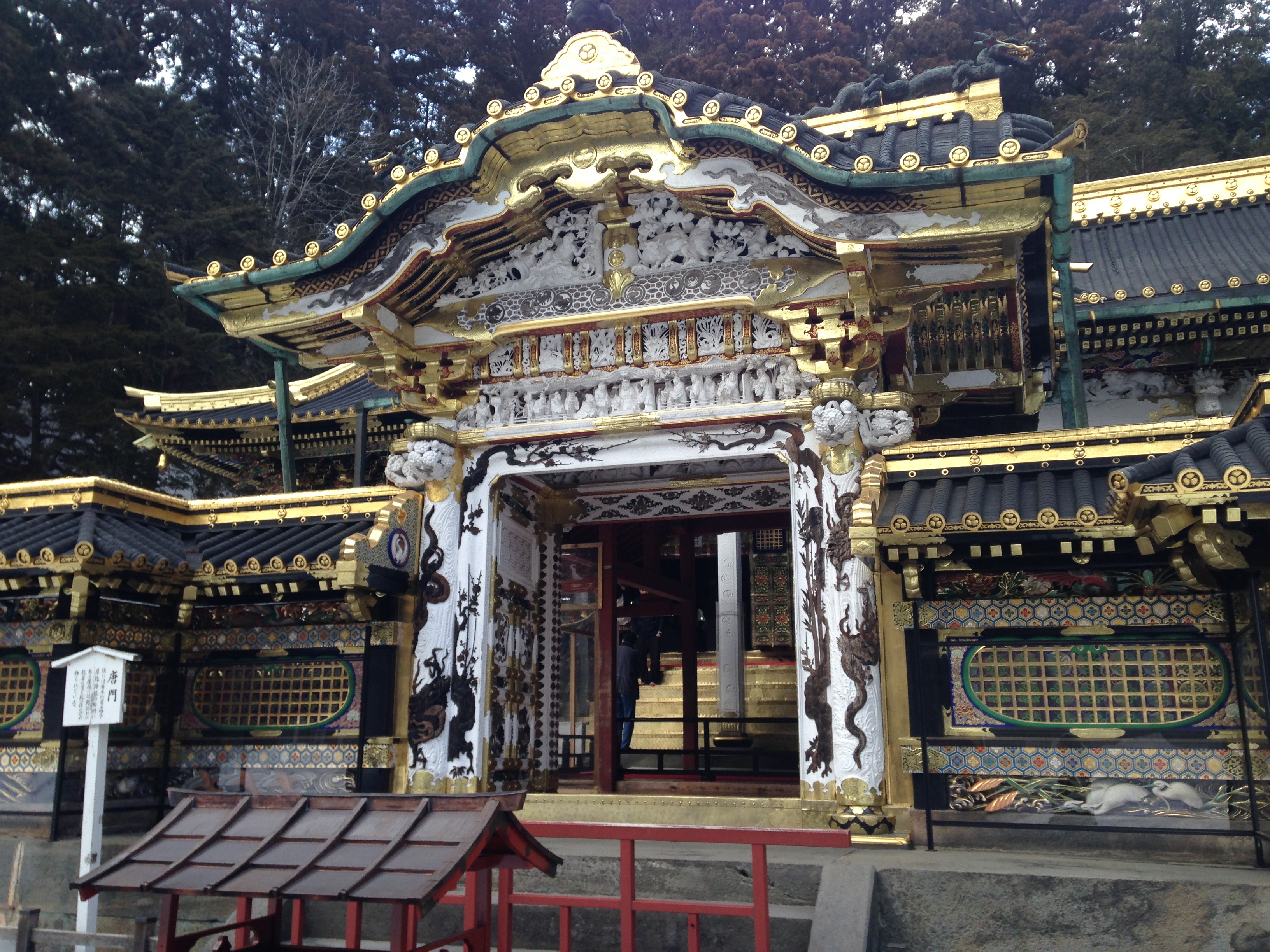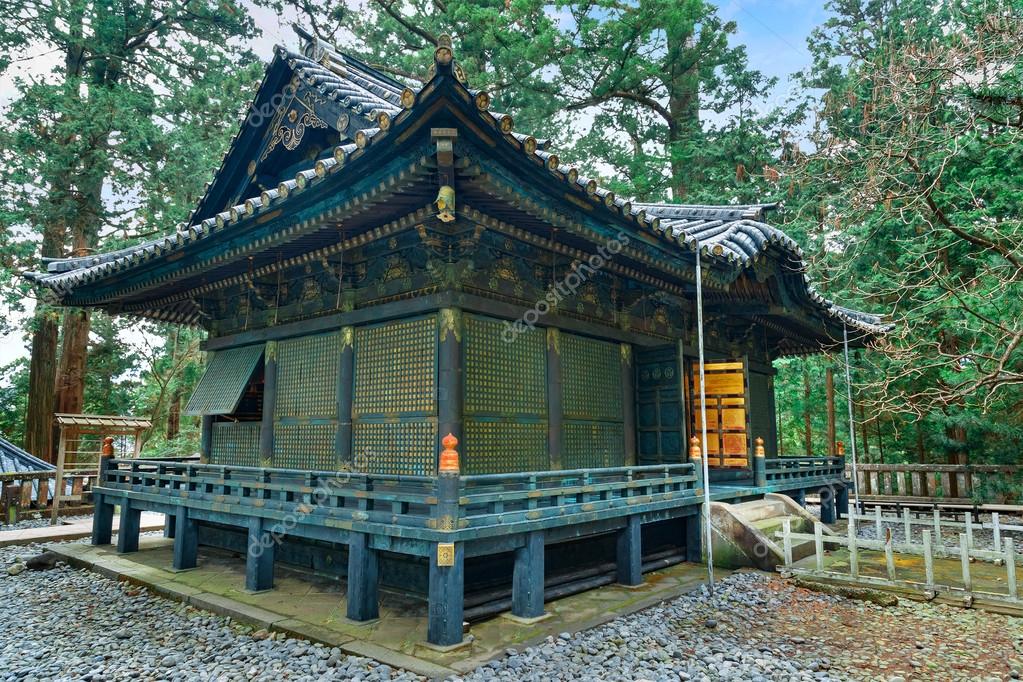Nikko-shogu is a Tosho-gu Shinto shrine located in Nikko, Tochigi Prefecture, Japan.Together with Futarasan Shrine and Rino-ji, it forms the Shrines and Temples of Nikkō UNESCO World Heritage Site, with 42 structures of the shrine included in the nomination. Five of them are designated as National Treasures of Japan, and three more as Important Cultural Properties.

Toosho-guu is dedicated to Tokugawa Ieyasu, the founder of the Tokugawa shogunate. It was initially built in 1617, during the Edo period, while Ieyasu's son Hidetada was shogun. It was enlarged during the time of the third shōgun, Iemitsu. Ieyasu is enshrined there, where his remains are also entombed This shrine was built by Tokugawa retainer Todo Takatora. During the Edo period, the Tokugawa shogunate carried out stately processions from Edo to the Nikko Tosho-gu along the Nikko Kaido. The shrine's annual spring and autumn festivals reenact these occasions, and are known as "processions of a thousand warriors". Also part of the beauty is the row of majestic trees lining the roadway, termed the Cedar Avenue of Nikko.

Five structures at Nikko Tosho-gu are categorized as National Treasures of Japan, and three more as Important Cultural Properties.Additionally, two swords in the possession of the shrine are National Treasures, and numerous other objects are Important Cultural Properties. Famous buildings at the Tōshō-gū include the richly decorated Yōmeimon, a gate that is also known as "higurashi-no-mon". The latter name means that one could look at it until sundown, and not tire of seeing it. Carvings in deep relief, painted in rich colors, decorate the surface of the structure. The next gate is the karamon decorated with white ornaments. Located nearby is a woodcarving of a sleepy cat, "Nemuri-neko", attributed to Hidari Jingor.

The stable of the shrine's sacred horses bears a carving of the three wise monkeys, who hear, speak and see no evil, a traditional symbol in Chinese and Japanese culture.The original five-storey pagoda was donated by a daimyō in 1650, but it was burned down during a fire, and was rebuilt in 1818. Each storey represents an element–earth, water, fire, wind and aether–in ascending order. Inside the pagoda, a central shinba shirapillar hangs from chains to minimize damage from earthquakes.Hundreds of stone steps lead through the cryptomeria forest up to the grave of Ieyasu. A torii at the top bears calligraphy attributed to Emperor Go-Mizunoo. A bronze urn contains the remains of Tokugawa Ieyasu.In 2008 Yuri Kawasaki became the first female Shinto priest ever to serve at Nikko Tosho-gu.

Toosho-guu is dedicated to Tokugawa Ieyasu, the founder of the Tokugawa shogunate. It was initially built in 1617, during the Edo period, while Ieyasu's son Hidetada was shogun. It was enlarged during the time of the third shōgun, Iemitsu. Ieyasu is enshrined there, where his remains are also entombed This shrine was built by Tokugawa retainer Todo Takatora. During the Edo period, the Tokugawa shogunate carried out stately processions from Edo to the Nikko Tosho-gu along the Nikko Kaido. The shrine's annual spring and autumn festivals reenact these occasions, and are known as "processions of a thousand warriors". Also part of the beauty is the row of majestic trees lining the roadway, termed the Cedar Avenue of Nikko.

Five structures at Nikko Tosho-gu are categorized as National Treasures of Japan, and three more as Important Cultural Properties.Additionally, two swords in the possession of the shrine are National Treasures, and numerous other objects are Important Cultural Properties. Famous buildings at the Tōshō-gū include the richly decorated Yōmeimon, a gate that is also known as "higurashi-no-mon". The latter name means that one could look at it until sundown, and not tire of seeing it. Carvings in deep relief, painted in rich colors, decorate the surface of the structure. The next gate is the karamon decorated with white ornaments. Located nearby is a woodcarving of a sleepy cat, "Nemuri-neko", attributed to Hidari Jingor.

The stable of the shrine's sacred horses bears a carving of the three wise monkeys, who hear, speak and see no evil, a traditional symbol in Chinese and Japanese culture.The original five-storey pagoda was donated by a daimyō in 1650, but it was burned down during a fire, and was rebuilt in 1818. Each storey represents an element–earth, water, fire, wind and aether–in ascending order. Inside the pagoda, a central shinba shirapillar hangs from chains to minimize damage from earthquakes.Hundreds of stone steps lead through the cryptomeria forest up to the grave of Ieyasu. A torii at the top bears calligraphy attributed to Emperor Go-Mizunoo. A bronze urn contains the remains of Tokugawa Ieyasu.In 2008 Yuri Kawasaki became the first female Shinto priest ever to serve at Nikko Tosho-gu.

Comments
Post a Comment